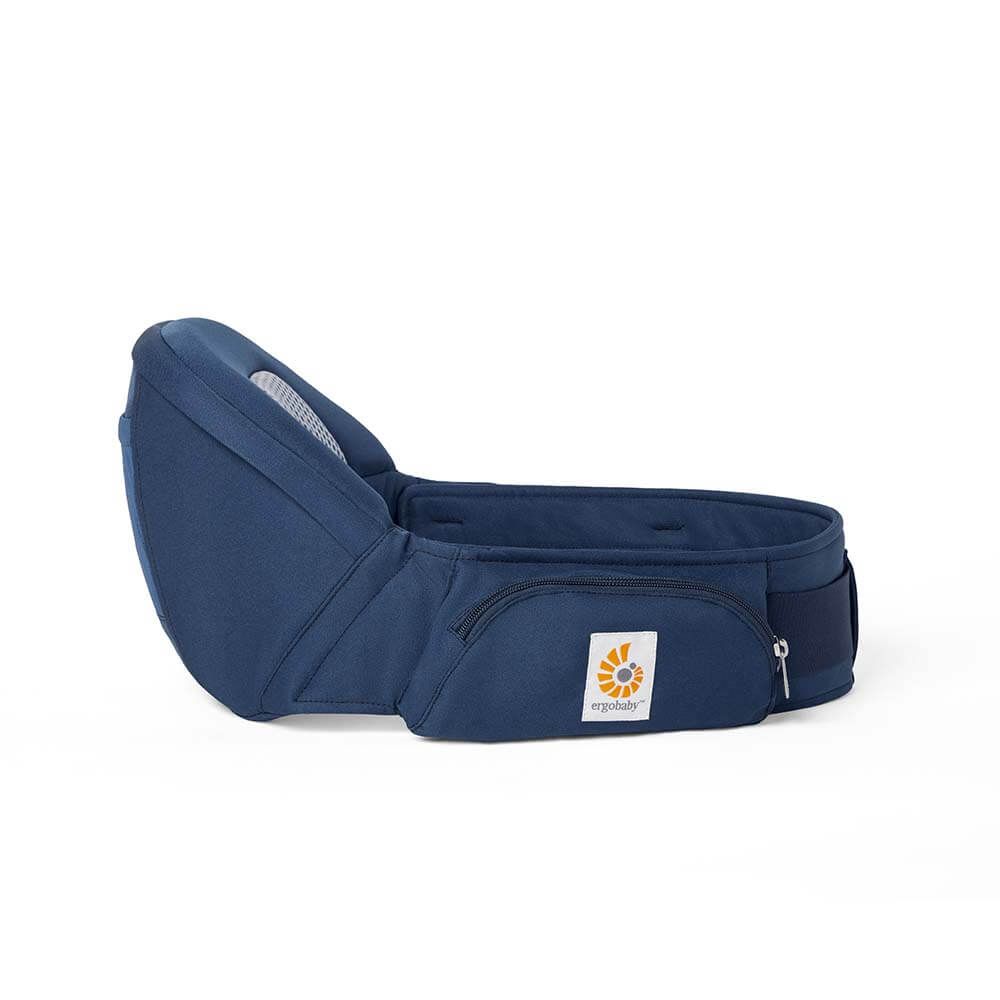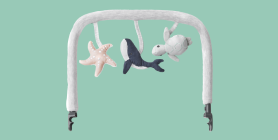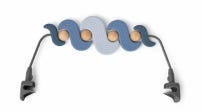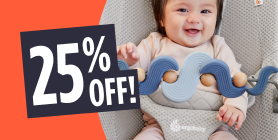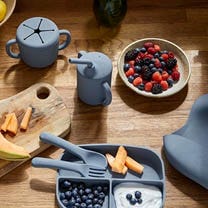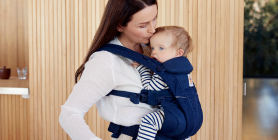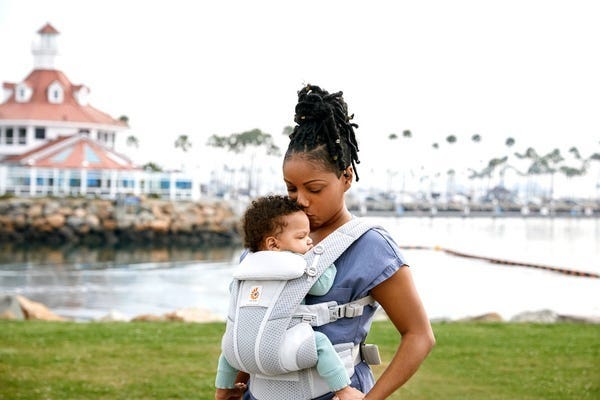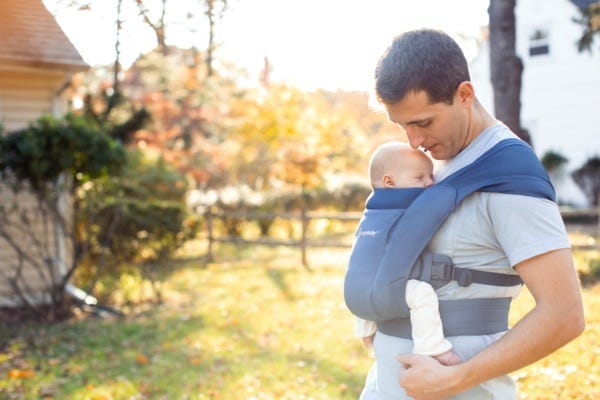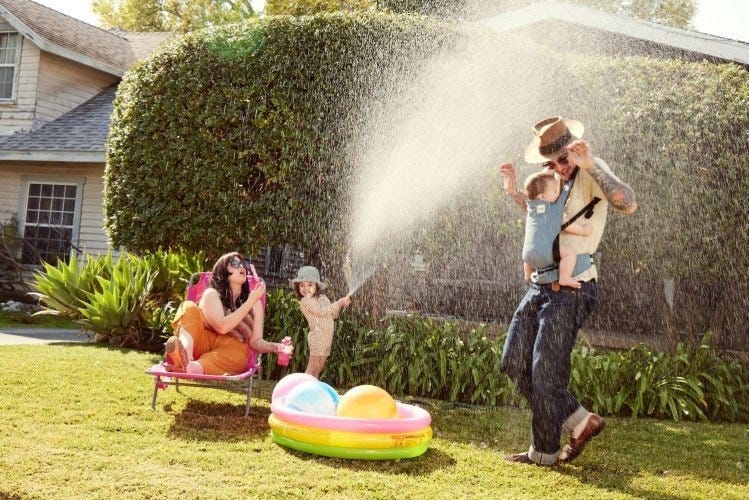
One of the major sources of frustration and even guilt in early motherhood is breastfeeding. Yes, for some mothers breastfeeding runs utterly smoothly, but for others, breastfeeding challenges become a partially painful and uneven ordeal. The range of complaints includes cracks and fissures in the nipples, sore breasts, infections, fungi, concerns with having enough milk, and feelings of having to feed too frequently and thus becoming a milk-producing machine. These conditions make breastfeeding less of the pleasant bonding activity which most mothers envision for their unborn child. So, what can help these mothers? Perhaps a few breastfeeding tips and education.
First Recourse: Mastering the Basics
The first recourse or breastfeeding tip is naturally to make sure that the basics are in place. There is plenty of literature out there, which an expectant woman can read at her own leisure. The website of La Leche League is a very good on-line source of information. La Leche League has also published a good and thorough book “The Womanly Art of Breastfeeding.” However, if the baby is already there, and the mother feels overwhelmed by the many demands of the little one, calling on a lactation consultant could be a wise measure.
Mastering the Fundamentals
 The basics of breastfeeding include finding a proper position that suits you and your baby, so you both can relax. This may involve some experimenting, including propping yourself and your baby up with pillows. The proper latching on of the baby to the mother’s breast is of fundamental importance and can make all the difference in the world, not least when breastfeeding is experienced as painful. Being aware that the composition of the milk changes during each feeding helps too. The milk will change from being relatively light to become richer in fat during each feeding. The first part of the feeding serves to quench the baby’s thirst, the latter part to satisfy her or his hunger. Ending off a feeding prematurely will force the baby to demand more frequent feedings and thus less breaks for the mother. Ending off the feeding prematurely can also lead to sore breasts and, eventually, also inflammations of the breast. When the milk is made to stagnate it can mess up the finely tuned system.
The basics of breastfeeding include finding a proper position that suits you and your baby, so you both can relax. This may involve some experimenting, including propping yourself and your baby up with pillows. The proper latching on of the baby to the mother’s breast is of fundamental importance and can make all the difference in the world, not least when breastfeeding is experienced as painful. Being aware that the composition of the milk changes during each feeding helps too. The milk will change from being relatively light to become richer in fat during each feeding. The first part of the feeding serves to quench the baby’s thirst, the latter part to satisfy her or his hunger. Ending off a feeding prematurely will force the baby to demand more frequent feedings and thus less breaks for the mother. Ending off the feeding prematurely can also lead to sore breasts and, eventually, also inflammations of the breast. When the milk is made to stagnate it can mess up the finely tuned system.
Beyond the Basics: Unraveling the Persistence of Pain
Having adopted all these fundamentals, and even after enlisting the help of a professional lactation consultant, some women, however, still experience breastfeeding challenges such as intermittent or persistent pain. Some women experience brief periods where the breastfeeding lives up the pleasant expectations, interrupted by periods where breastfeeding challenges become a painful source of frustration. It is like a pendulum swing, going back and forth. For some women, having exhausted the sources of help and external advice, the pain and frustration becomes unbearable and breastfeeding becomes more of a threat to the bond of love and pleasure that any mother hopes to form with her baby. They then make the decision to switch to formula milk; a decision that should be respected.
Insights into Oxytocin: A Key Player in Breastfeeding Pleasure
For some mothers the pain is sufficiently bearable for them to persist in breastfeeding and most will report that after a period ranging from a few weeks to several months, breastfeeding becomes the smooth and mutually pleasant bonding experience which they were hoping for. The scientific literature on breastfeeding offers relatively little direct insight into the possible mechanisms underlying these large variations in the breastfeeding experience. However, one candidate mechanism seems to involve the birth and breastfeeding hormone oxytocin. Oxytocin is the hormone that causes the uterus to contract during labor and birth. It is also responsible for the milk let-down mechanism by making the muscle cells surrounding the breast’s milk producing glands contract.
Oxytocin: More Than a Milk Let-Down Mechanism
These are the classical and well-known effects of oxytocin, however, research in the past two decades has shed light on some highly interesting and relevant effects of oxytocin. The level of oxytocin in the body seems to correlate inversely with the level of stress hormones, heart rate and blood pressure. The more oxytocin you have flowing around in your body, the less stressed you are likely to be. And we know that stress is very counterproductive to breastfeeding. Oxytocin also seems to work as a pain reducer. So, the more oxytocin you have in your body, the greater your tolerance will be towards pain.
Oxytocin's Influence on Parenting Quality
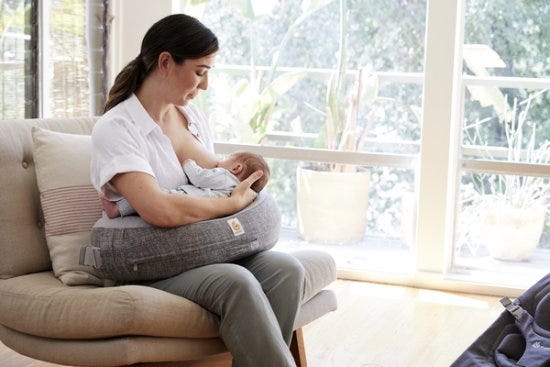 What is even more interesting is the correlation between levels of oxytocin in the parent’s blood and saliva and the quality of parenting that they are able to provide. High oxytocin parents seem to be more in tune with their babies and they derive more pleasure from their interactions with their baby, which then turns into a virtuous circle. Interactions with the baby are simple, straightforward, uncomplicated and fun. What the researchers have recently established is that in any given group of human parents, there will be variations in the naturally occurring levels of oxytocin in their blood and in their saliva. Some parents will, for reasons as of yet unknown, have high levels of oxytocin, others will have low levels.
What is even more interesting is the correlation between levels of oxytocin in the parent’s blood and saliva and the quality of parenting that they are able to provide. High oxytocin parents seem to be more in tune with their babies and they derive more pleasure from their interactions with their baby, which then turns into a virtuous circle. Interactions with the baby are simple, straightforward, uncomplicated and fun. What the researchers have recently established is that in any given group of human parents, there will be variations in the naturally occurring levels of oxytocin in their blood and in their saliva. Some parents will, for reasons as of yet unknown, have high levels of oxytocin, others will have low levels.
Influence on Baby: Oxytocin's Effects in Infants
The good news is that there is circumstantial evidence that it is possible to influence the levels of oxytocin in a human body. One tried and tested approach to difficulties with initializing breastfeeding is to have the mother engage in skin-to-skin contact over a period of several days. This will normally cause the oxytocin level to increase and thus stimulate the milk let-down reflex. In one study, the researchers examined the effects of prolonging the period where the mother involved herself in skin-to-skin contact with the baby. During the first week the mother would engage in skin-to-skin contact for approximately five hours a day, and in weeks two through five, two and a half hours a day. Interestingly, of the women who initiated breastfeeding after birth, the amount of breastfeeding women in the skin-to-skin contact group remained the same after three months, presumably meaning that not one single skin-to-skin mother had ceased breastfeeding at three months. In the control group, some 23% had given up at three months. It is thus very likely that the extended physical contact caused the oxytocin levels to rise in the skin-to-skin mothers, and thus helped make breastfeeding a pleasurable experience, prompting the mothers to continue.
Oxytocin's Impact on Nutrient Uptake in Infants
Curiously, oxytocin also has effects in the baby. Experiments in animals have shown that oxytocin works in two ways as regards nutrient uptake. First, when the level of oxytocin is high, the pups will be able to go longer without food, without displaying signs of hunger. The theoretical consequences of that for a breastfeeding mother ought to be obvious. If she can assist in increasing her baby’s oxytocin level by providing physical contact (ideally skin-to-skin) her baby will be able to go longer without food, thus reducing the demands on the mother’s time. Secondly, if a group of pups is taken away from the mother, divided into two groups, where one group is caressed daily by a research assistant (and thus affecting the level of oxytocin) and the other left alone, the caressed group will utilize the supplied nutrients far better than the untouched group. So even though the two groups are given the exact same amounts of nutrients, the caressed group will grow faster. This could explain why some children are growing faster than others – having been exposed to more physical contact, their oxytocin level is higher and they therefore utilize the nutrients of their mother’s milk more efficiently. In summary, oxytocin seems to affect breastfeeding more broadly than hitherto assumed. The effects of oxytocin on breastfeeding are not simply reduced to the milk let-down reflex, but affect a number of other supporting mechanisms, which in the end will assure that the breastfeeding experience is the pleasant and mutually rewarding experience that every mother is hoping for. The key to utilizing this insight is to expose yourself as a breastfeeding mother to extensive skin-to-skin contact, carry your baby on your body, look into her or his eyes, take in her or his lovely smell, and soon you will be successfully breastfeeding your baby.
Emotional Benefits of Getting Outside
Spending time in nature with your baby can strengthen the bond between you. The simple act of holding your baby close, feeling their warmth, and sharing new experiences together can create strong emotional connections. It’s also a wonderful way to reduce stress and improve your mood. When my littles were extra fussy, I’d take a walk around the neighborhood. Even though I don't live in an area with trails and surrounded by nature, simply behind outside changed everything. A little vitamin D does wonders!
Cognitive Development
Nature is a sensory wonderland for babies. The different sights, sounds, and smells can stimulate your baby’s senses and promote cognitive development. Watching leaves rustle, hearing birds chirp, and feeling the texture of a tree bark can all contribute to their learning and development.
All About Baby Carriers for Nature Adventures
Choosing the Right Baby Carrier
When it comes to selecting the best baby carrier for summer adventures, there are several options to consider.
Types of Baby Carriers:
- Wraps: Perfect for newborns, providing a snug and secure fit.
- Slings: Ideal for quick and easy use, offering good ventilation.
- Soft Structured Carriers: Versatile and comfortable for both parent and baby, suitable for longer trips.
Factors to Consider:
- Baby’s Age and Weight: Ensure the carrier is appropriate for your baby’s size and weight. For example, Ergobaby’s Embrace Newborn Carrier is perfect for the fourth trimester where baby is small and you’re looking for an easy way to stay close. As they grow, you’ll want to upgrade to an all-position carrier that’s meant for growing babies.
- Parent’s Comfort and Ergonomics: Look for carriers with padded shoulder straps and lumbar support if you’re planning on longer outings.
- Ease of Use: Choose a carrier that is easy to put on and take off.
- Climate and Breathability: Opt for carriers made of breathable fabrics to keep you and your baby cool in hot weather.
Safety Tips:
- Proper Positioning: Ensure your baby is seated correctly, with their legs in an "M" position and their head should be close enough to kiss.
- Checking for Wear and Tear: Regularly inspect your carrier for any signs of damage.
- Ensuring Adequate Support: Make sure the carrier provides proper support for your baby’s head and neck.
Exploring Nature with a Baby Carrier
Ideal Spots for a Nature Walk with Baby
- Parks and Gardens: Great for leisurely walks and picnics.
- Nature Trails and Forests: Perfect for more adventurous outings.
- Beaches and Lakesides: Wonderful for enjoying the water and sand, with the right carrier.
Activity Ideas
- Hiking: Enjoy a scenic hike with a hiking baby carrier that offers support and storage.
- Bird Watching: Use your carrier to keep your baby close while you explore and observe wildlife.
- Picnics: A carrier can free up your hands, making it easier to carry picnic supplies.


Advantages of Using Strollers for Nature Adventures
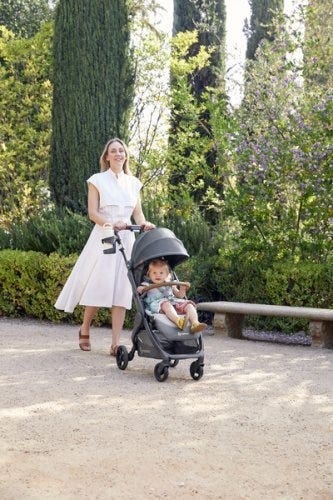

While baby carriers are fantastic for mobility and closeness, depending on the adventure of choice you might want to be a stroller along too.
There are a LOT of baby stroller options on the market. So we understand how confusing it can be to choose the one that’s right for your family. Not only are there a variety of brands, but a variety of strollers that serve different purposes.
There are a few types of strollers on the market:
- Full-sized stroller: This is typically the stroller parents thing of buying for all its versatility.
- Lightweight or umbrella stroller:These compact strollers are perfect for on-the-go adventures.
- Jogging stroller: Designed for parents who want to combine fitness with outdoor adventures.
- Double stroller: Designed for parents with multiple kids, especially twins.
- Car seat carrier: These strollers connect to a specific car seat. We don't typically recommend these as they can be unsafe for baby and uncomfortable for parents who are pushing.
Learn more about the types of strollers and which one would be best for you.
Benefits of Bringing a Stroller
- Storage Space for Gear: Ample room for carrying all your essentials like a diaper bag, beach toys and more.
- Shade and Weather Protection: Built-in canopies to shield your baby from the sun when they are lounging.
- Options: If you have more than one kid, you can stroll with one and carry the other. Or, if you’re getting warm or your little one is getting fussy, you can switch up their position from stroller to carrier or vice versa.
Safety Tips for Strollers
- Ensure your stroller is in good working condition. Make sure buckles are still buckling and that there are no rips or holes that could compromise your baby’s safety.
- Use sunshades or bug nets to protect your little one’s skin.
- Securing the baby properly: always buckle up your baby for safety even if you think they are old enough to go without the buckle.
Combining Baby Carriers and Strollers
For the ultimate flexibility, consider using both a baby carrier and a stroller on your outings.
Combining both options allows you to adapt to different situations. Use the carrier for more rugged trails and switch to the stroller for smoother paths or when your baby needs a nap.
Transition Tips
- Smooth Transitions: Plan stops where you can easily switch from carrier to stroller.
- Pack Light: Only bring essentials to make transitions easier.
Tips for a Successful Adventure
Planning Ahead
- Route Planning: Choose baby-friendly trails and parks. Check local mom groups or outdoor groups and get recommendations for the best outings for kids.
- Check Weather Conditions: Avoid extreme heat or unpredictable weather. Even with our most breathable carriers, when it’s hot, it’s hot. And having two bodies against each other in the heat will be naturally hot and sticky already.
- Packing Checklist: Include diapers, snacks, water, sunscreen, and a first-aid kit. These all-position carriers have storage pockets where you can fit some of the items easily!
- Stay Hydrated and Nourished: Pack healthy snacks to keep energy levels up and bring plenty of water for both you and baby.
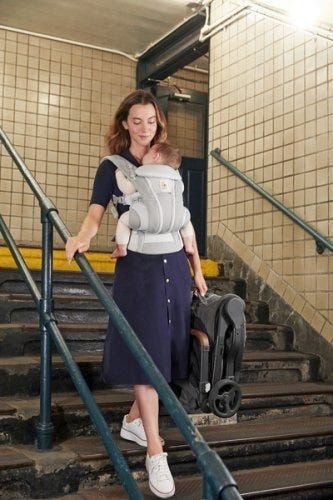

Summer adventures with your baby are a wonderful way to create lasting memories and enjoy the beauty of nature together. From baby carriers to strollers, Ergobaby products are designed to provide comfort and ease for both you and your little one. So, gear up, get outside, and explore the world with your baby by your side.
Ready to embark on your own summer adventures? Check out Ergobaby’s range of baby carriers and strollers to find the perfect match for your family’s needs. Visit our website today and start planning your next outdoor excursion!





